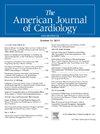Tailored Therapy in Cardiogenic Shock: Case-Based Management Choices
IF 2.3
3区 医学
Q2 CARDIAC & CARDIOVASCULAR SYSTEMS
引用次数: 0
Abstract
Cardiogenic shock (CS) is a complex, multisystem disorder precipitated by hypoperfusion from cardiac dysfunction. Our current approach to defining and treating CS encompasses all patients under 1 umbrella regardless of phenotype. This has created challenges for clinical trials and patient care owing to the heterogeneity of the patient population with CS. The Society of Coronary Angiography and Interventions shock classification has created a universal language for CS that has been rapidly adopted by researchers and clinicians. Its latest iteration established the 3-axis model incorporating shock severity, risk modifiers, and phenotypes. Phenotypes of CS have unique hemodynamic profiles that require nuanced adjustment approaches. In this study, we discuss representative cases including acute myocardial infarction, acute-on-chronic heart failure, fulminant myocarditis, and right ventricular failure. For each phenotype, specific hemodynamic parameters may help confirm appropriate diagnosis and direct to therapeutic targets signaling stability and recovery. The underlying pathophysiology of each phenotype can also help predict the extent of stabilization with pharmacologic interventions or the need to escalate to mechanical circulatory support. In conclusion, this tailored approach to CS, rather than a 1-size-fits-all approach, could help improve outcomes.
心源性休克的定制疗法:基于病例的管理选择。
心源性休克(CS)是一种复杂的多系统疾病,由心脏功能障碍导致的低灌注引起。目前,我们定义和治疗 CS 的方法将所有患者归为一类,而不考虑其表型。由于 CS 患者的异质性,这给临床试验和患者护理带来了挑战。SCAI 休克分类为 CS 创造了一种通用语言,并被研究人员和临床医生迅速采用。其最新版本建立了包含休克严重程度、风险调节因素和表型的三轴模型。CS 的表型具有独特的血流动力学特征,需要细微的调整方法。在此,我们将讨论具有代表性的病例,包括急性心肌梗死、急性和慢性心力衰竭、暴发性心肌炎和右心室衰竭。对于每种表型,特定的血流动力学参数都有助于确诊以及找到治疗目标,从而促进病情的稳定和恢复。每种表型的潜在病理生理学也有助于预测药物干预的稳定程度或升级到机械循环支持的必要性。总之,这种为 CS 量身定制的方法,而不是放之四海而皆准的方法,有助于改善预后。
本文章由计算机程序翻译,如有差异,请以英文原文为准。
求助全文
约1分钟内获得全文
求助全文
来源期刊

American Journal of Cardiology
医学-心血管系统
CiteScore
4.00
自引率
3.60%
发文量
698
审稿时长
33 days
期刊介绍:
Published 24 times a year, The American Journal of Cardiology® is an independent journal designed for cardiovascular disease specialists and internists with a subspecialty in cardiology throughout the world. AJC is an independent, scientific, peer-reviewed journal of original articles that focus on the practical, clinical approach to the diagnosis and treatment of cardiovascular disease. AJC has one of the fastest acceptance to publication times in Cardiology. Features report on systemic hypertension, methodology, drugs, pacing, arrhythmia, preventive cardiology, congestive heart failure, valvular heart disease, congenital heart disease, and cardiomyopathy. Also included are editorials, readers'' comments, and symposia.
 求助内容:
求助内容: 应助结果提醒方式:
应助结果提醒方式:


